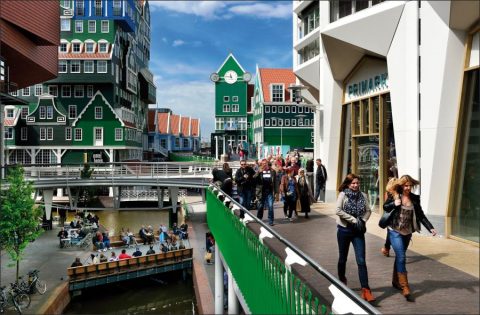Amsterdam is the capital of the Netherlands. The origins of the city date back to the twelfth century, when trade along the coasts of the North Sea and the Baltics developed. The main centre of European trade had been shifting from the North Italian cities towards North-west Europe, where many cities were developing on the basis of trade and access to water transport (Pirenne, 1925). During the 80-year war with the Spanish, the city of Amsterdam developed very quickly.
The main reason for this was that the cities in the Netherlands offered a liberal and tolerant climate that attracted many people who had previously been persecuted because of religion or political ideas. Whereas other European regions nearly collapsed under the burden of the noblesse, the Netherlands also offered a liberal economic climate that attracted capital and trade, especially from Antwerp, that was occupied by the Spanish. During and after the 80-year war, the Netherlands experienced a Golden Age, in which Amsterdam flourished and fulfilled a key role.
Description of the Region and its Location
Amsterdam became the main trade centre in Europe, where all kinds of goods were stored and distributed. Among other Dutch cities (for example, Hoorn) Amsterdam had a predominant role in the trade to the Far East. The Vereenigde Oostindische Compagnie (VOC), the United East Indies Company, was founded. This was a global multinational with stockholders. Together with growing international trade, Amsterdam developed as the most important financial centre in the seventeenth century.
Not only was the first stock exchange founded in Amsterdam, developed on the need to share risk in the dangerous trade, but also a market for financial derivatives like futures and options developed in order to hedge against long-term risk. Also cities in the Netherlands did not thrive on the surrounding land, that was mostly wet in wintertime and easy to defend, but on trade.
This is why population density was able to reach high levels as early as the sixteenth and seventeenth centuries. The Netherlands, including Amsterdam, began to lose its key role in European economic development in the late seventeenth and early eighteenth centuries, when England developed as the main power in Europe. It is not surprising that New Amsterdam was exchanged with the English to be renamed New York, for an insignificant area in Latin America.
The legacy of the Amsterdam Golden Age needs to be considered with respect to the topic in question. First, we have to stress the fact that the lack of central power (absolutism) in the Netherlands contributed to the dispersed nature of the Dutch population. By the seventeenth century Amsterdam was by far the largest city in the Netherlands. However, the industrial revolution of the nineteenth century did not affect Amsterdam as it did other cities. In the nineteenth century, when the economic base of Amsterdam was eroded in relative terms, other cities like The Hague, Rotterdam and Utrecht were growing at a faster pace.
The history of Amsterdam explains why this small city in international terms still has a unique, open-minded, tolerant and liberal international climate. It also explains why the main economic sectors are now trade, transport and finance, and why manufacturing industries have a secondary position.
Furthermore, the kind of manufacturing industries which dominate such as printing and publishing also date back to the Golden Age. These industries thrived on the lack of censorship. Other important industries were timber (shipping), food and paint (shipping). These industries developed on the large-scale use of windmills around the city, especially in Zaandam, at the northwest of Amsterdam and part of Amsterdam Region.
Hits: 73
